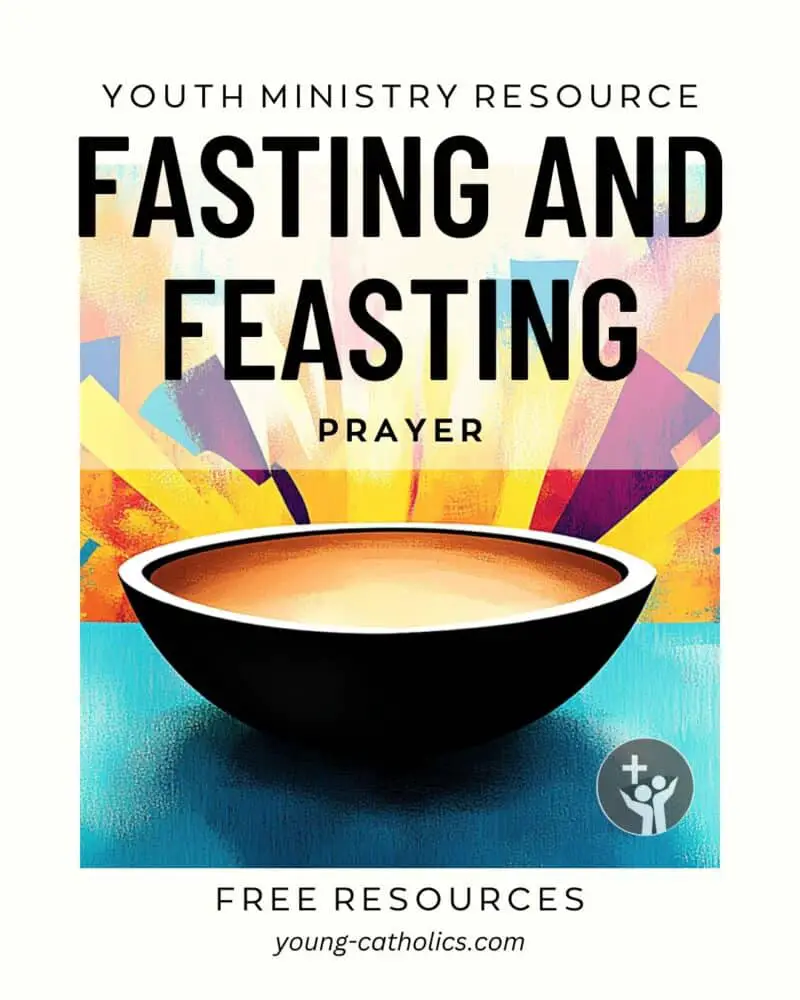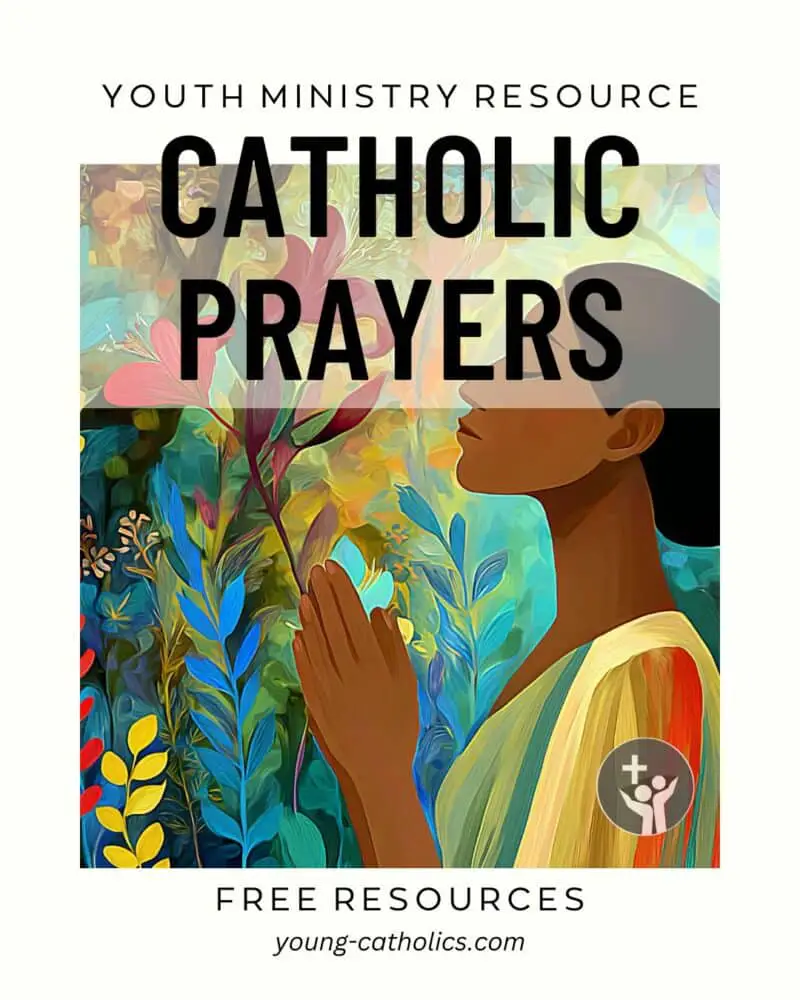Fasting and Feasting Prayer

The Fasting and Feasting Prayer offers a unique approach to Lent. It shifts our focus from just giving things up to also filling our lives with something better. While many prayers during this season focus on sacrifice, this one encourages us to replace negative habits with positive ones. It helps us remember that Lent is about spiritual growth, not just self-denial.
This prayer has been sometimes been attributed to William Arthur Ward, but its origins are unclear. It presents a list of things to fast from—like judgment, fear, or resentment—alongside positive alternatives to embrace, such as compassion, hope, and forgiveness. Each line offers a practical way to live out the spirit of Lent. It can be a simple yet powerful guide to help deepen our Lenten experience.
Fasting is a traditional part of Lent, but this prayer reminds us that the goal is to make space for something good. We are called not just to give things up, but to fill the empty spaces with attitudes and actions that bring us closer to God and others. This makes the Lenten journey more meaningful and fulfilling.
This prayer is suitable for personal reflection or group settings. It is a helpful tool for anyone looking to connect more deeply with the themes of Lent. By practicing both fasting and feasting, we can build habits that bring us lasting peace and joy, beyond the Lenten season.
A Simple Yet Powerful Structure
The Fasting and Feasting Prayer follows a clear, two-part format. Each line begins with something to “fast from” and ends with something to “feast on.” It pairs a negative behavior or mindset with a positive alternative, creating a balanced approach to spiritual growth.
The structure makes it easy to read and reflect upon. It focuses on specific actions or attitudes, like replacing anger with patience or fear with trust. This simple contrast helps us clearly see what we need to change and how to move forward.
The prayer’s format also makes it suitable for daily reflection. You can focus on one line each day, using it as a guide to improve your habits and mindset throughout Lent.
Connecting the Prayer to Scripture and Teaching
The Fasting and Feasting Prayer reflects many themes found in Scripture and Catholic teachings. For example, the call to “fast from anger and feast on patience” aligns with St. Paul’s teachings in his letters, where he urges us to show kindness and love to one another. Similarly, the prayer’s encouragement to “fast from discontent and feast on gratitude” echoes the Psalms’ frequent calls to give thanks to God.
This prayer fits well with Catholic catechesis. It emphasizes replacing sin with virtue, which aligns with the Catechism’s guidance on moral living: “The way of perfection passes by way of the Cross. There is no holiness without renunciation and spiritual battle” (CCC 2015).
In youth ministry, this prayer can help young people develop positive spiritual habits. It encourages them to let go of negative behaviors while building Christ-like virtues. Youth can also relate to its practical, action-based approach, making it easier for them to integrate the lessons into daily life. By focusing on change and growth, the prayer supports a key goal of youth ministry: forming young disciples who are committed to living the faith actively.
The Fasting and Feasting Prayer
Fast from judging others; feast on Christ within in them.
Fast from emphasis on difference; feast on our bonds.
Fast from fear of illness; feast on the healing power of God.
Fast from apparent darkness; feast on God’s light.
Fast from words that cut down; feast on speech that uplifts.
Fast from gossip; feast on affirmations.
Fast from discontent; feast on gratitude.
Fast from pessimism; Feast on hope.
Fast from anger; feast on patience.
Fast from negatives; feast on encouragement.
Fast from resentment; feast on forgiveness.
Fast from suspicion; feast on truth.
Fast from self-centeredness; feast on compassion.
Fast from complaining; feast on appreciation.
Fast from giving up; feast on enthusiasm.
Fast from the shadows of sorrow; feast on trust in God.
Fast from focusing on problems; feast on unceasing prayer.
Fast from anxiety; feast on faith.
More Resources

More Lenten Ideas for Prayer, Fasting, and Almsgiving
Lent encourages us to grow through prayer, fasting, and almsgiving. Looking for ways to live out these three pillars? Visit our Lenten ideas page for practical suggestions.
You’ll find tips for deepening your prayer life, ideas for meaningful fasting, and ways to give back to others. These ideas can help you make Lent more meaningful and focused. Explore new ways to enrich your spiritual journey this season.
Fasting and Abstinence Information for Catholics
Ash Wednesday and Good Friday are obligatory days of fasting and abstinence for Catholics. In addition, Fridays during Lent are obligatory days of abstinence.
For members of the Latin Catholic Church, the norms on fasting are obligatory from age 18 until age 59. When fasting, a person is permitted to eat one full meal, as well as two smaller meals that together are not equal to a full meal. The norms concerning abstinence from meat are binding upon members of the Latin Catholic Church from age 14 onwards.
USCCB

More Catholic Prayers
If you are looking for more prayers to enrich your spiritual journey, visit the Catholic Prayers page on our site. You will find a variety of prayers, including the Fasting and Feasting Prayer.
These prayers can help deepen your faith and offer new ways to connect with God. Whether you seek prayers for Lent, daily life, or special intentions, you will find helpful resources. Explore the page and discover new prayers to guide your daily spiritual growth. Visit Catholic Prayers to learn more.
Social Media Graphics and Bulletin Artwork
A Bowl of Light and Grace

Looking for a way to reflect the spirit of Lent in your faith community? This image captures the balance of fasting and feasting in prayerful living.
It’s ready for use in your bulletin or newsletter to go along with reflections on Lent, sacrifice, or renewal. Help others see Lent as a time filled with color, purpose, and hope.
Paid subscribers may download a large copy this digital artwork (without watermarks) free of charge by clicking here. You must be logged in as a paid subscriber to access the file.
Only current paid subscribers have the rights to use the artwork.
If you would like this image to be made available as a specific product (card, poster, mug, etc.) or as an extra high resolution image for personal use just post a comment about what you want and we will create a link to our online store for you.
Questions and Answers
What is the Fasting and Feasting prayer?
The Fasting and Feasting prayer is a prayer that encourages us to give up negative attitudes or behaviors and replace them with positive actions. It pairs fasting with feasting, helping us make room for growth in faith and character.
How is the Fasting and Feasting prayer used during Lent?
During Lent, the Fasting and Feasting prayer guides us to focus on more than just giving things up. It suggests replacing negative habits with positive ones. This makes Lent a time for spiritual renewal, not just sacrifice.
Can the Fasting and Feasting prayer be used outside of Lent?
Yes, the Fasting and Feasting prayer is helpful anytime. It is a way to encourage positive change and focus on growing closer to God.
How can this prayer be used with youth groups?
The Fasting and Feasting prayer works well with youth groups because it is simple and practical. It helps young people understand fasting as more than just giving up things; it shows how to adopt positive habits too.
Who wrote the Fasting and Feasting prayer?
The author of the Fasting and Feasting prayer is uncertain. Some attribute it to William Arthur Ward, but this is not confirmed. Its message remains meaningful regardless of its origin.
Replacing Negatives with Positives
The Fasting and Feasting prayer offers a unique approach to spiritual growth. It pairs fasting with feasting, inviting believers to let go of negative thoughts or behaviors and replace them with positive ones. Instead of focusing only on what we give up, it encourages us to welcome better habits that reflect God’s love.
This prayer can be especially meaningful during Lent. It helps make fasting more than just a sacrifice, emphasizing renewal and growth. The prayer’s themes align well with Catholic teachings, making it a useful tool for catechesis, youth ministry, and personal reflection.
The Fasting and Feasting prayer is simple but powerful. It calls for small, everyday changes that can make a big difference in our spiritual lives. By focusing on positive actions, it helps us create a deeper relationship with God and others.
Your Turn
Ready to try the Fasting and Feasting prayer? Use it to guide your Lenten journey or to enhance your daily prayer life. It’s a meaningful way to embrace positive changes.
Share how this prayer impacts your spiritual growth in the comment section. Let’s learn from each other as we strive for a deeper connection with God.



Leave a Reply